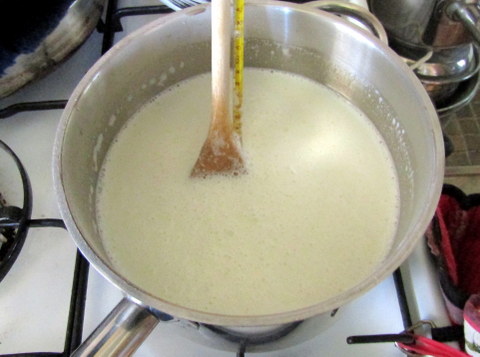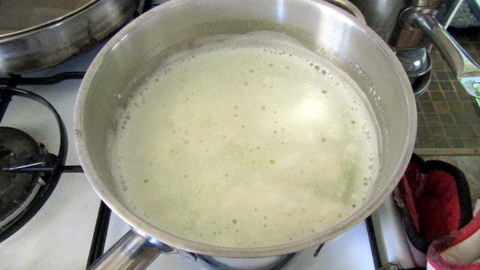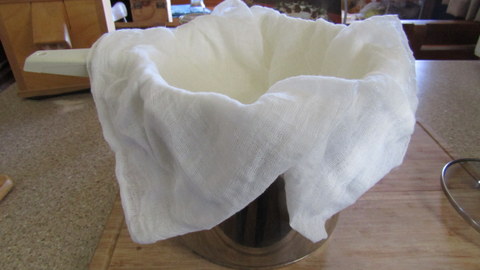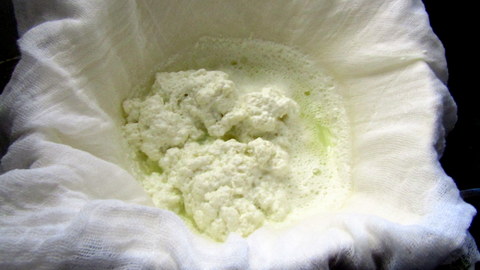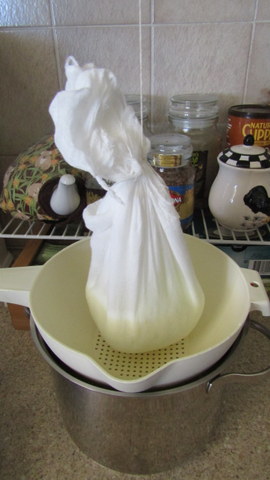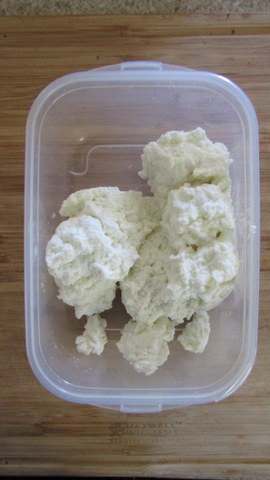We have fooled around with cheesemaking in the past, and had some fun with it, but I never really thought about it in terms of serious food production. If we had access to a cow or had our own goats it would make sense, but there didn’t seem much point in buying all the raw materials then making it ourselves, but recently things have changed!
Over the past few months we have been buying powdered skim milk, to save money, reduce our packaging waste output and to improve our resilience, and very recently we bought a 25kg bag of the stuff to take things to the next level. So if we have a guaranteed supply of skim milk, using it to make cheese, yoghurt etc, rather than buying it, makes a whole lot of sense to me!
Also, we use ricotta cheese on a regular basis and it is Simple (note the capital “S”) to make.
All you need is -
2 cups skim or full fat milk made up into 2 litres of water (to make 2 litres of skim milk from powdered milk put one litre of water into a container, whisk in two cups of skim milk powder until they are dissolved and then top up to two litres with water)
1 teaspoon citric acid (you could use lemon juice, vinegar or other acidulant)
1 teaspoon of cheese salt
The Process
Place the milk into a heavy bottomed pan.
Mix the citric acid with ¼ cup of cool water and then pour it into the milk, mixing well.
Place the pan on the heat and heat gently to 85°C – 90°C, taking 20 to 30 min and stirring throughout to stop the milk catching on the bottom as it heats. Coagulation of the milk will start about 80°C.
Once at temp, leave for 10 min to coagulate
Ladle the curds into a filter made from several layers of cheesecloth sitting in a colander, retain the whey if you are going to use it for something else.
Pull the corners of the cheese cloth together and tie them up and suspend it to drain for 20 – 30 min or until you reach the consistency you are looking for.
Remove from the cheese cloth and store it in a sealed container in the fridge, it should last for a week.
When we made ricotta using the above process, using skim milk, we got a yield of 385 grams.
General comments
We made a batch with full cream milk powder and skim milk powder. While the skim gave a smaller yield it and was a bit chalky in texture it tasted great and worked well in the recipes we tried it in.



